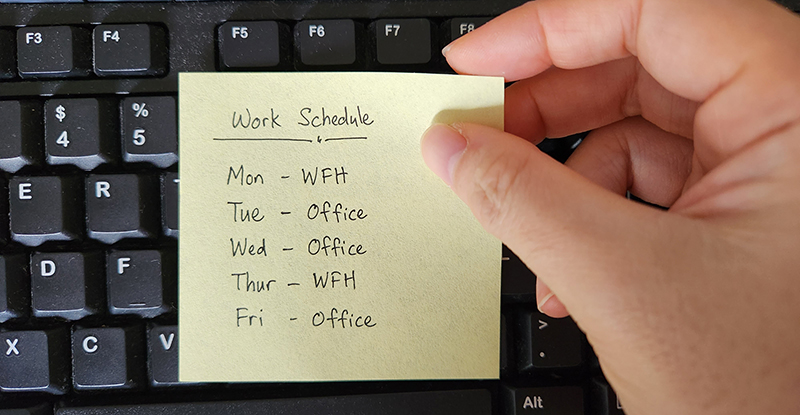
Phew! You’ve just finished a huge assignment that involved a lot of overtime and considerable pressure. Time to shorten your office hours and start packing for a well-deserved vacation, right? Those are both great ways of boosting your happiness after an intense work period, but what if you could prepare for stressful work cycles in advance, so you wouldn’t need to recover afterward?
Anyone can build up their resilience to the inevitable stresses of life by increasing their baseline level of happiness. Scientific research has shown that people who invest in nurturing positive emotions get happier over time and less susceptible to negative external forces. And, what’s more, becoming happier can also help you become more successful in life.
The science of happiness
Not so long ago, success—defined as a good paying job, a spouse, two kids, and a house in the suburbs with a white picket fence (aka “the American dream”)—was seen as the key to happiness.
Not only has the definition of success changed, but scientific research over the past two decades has shown that it’s actually happiness that determines success—not the other way around. That’s because higher levels of happiness create the optimal conditions for success. Happy people see more opportunities. They have more energy and get sick less often. They have better social relationships, are more creative, and think more clearly. These benefits have been verified in scientific studies.
And it’s not just individuals who benefit from increased happiness. Organizations that invest in improving their work culture over a long period of time benefit from the improved well-being of their employees. Employees in these environments are more co-operative, engaged, and productive—all factors that contribute to a better bottom line.
How to be happier
Tapping into this readily available resource is easier than you might think. Research on positivity has uncovered several tools we can all use to rewire our brains to access positive emotions more readily. The most accessible of these tools is the practice of gratitude.
Lower your stress level right nowWhenever you start to feel overwhelmed—whether at work or at home—there’s a simple breathing exercise you can do to lower your stress level right away.
The following exercise takes as little as a minute and will instantly calm your parasympathetic nervous system:
- Inhale deeply.
- Pause.
- Exhale, taking longer than you took to inhale.
- Repeat several times until you feel your body relax.
When you take longer to exhale than you do to inhale, you send a subconscious signal to your nervous system that induces calm.
Try it the next time you find your stress level rising!
One example of an effective gratitude practice that I often share is writing down three things that went well over the previous 24 hours. Over time, people who do this every day begin to default toward a more positive outlook. I know it works, because I’ve done it myself every morning for years. I now have several thousand entries on my list.
Consistency is key to the success of this practice. Making gratitude a regular habit is what makes it effective, because daily practice causes your brain to form strong neural connections dedicated to seeking out positive situations and experiences. If you only practise gratitude once in a while, you won’t teach your brain to default toward happiness. It takes commitment.
Bring happiness to work
If you’re a manager, you don’t have to ask all employees to start practising gratitude. There are many practical ways to foster a happy workforce. One of them is showing appreciation. Leaders often misinterpret appreciation as giving thanks, but most people don’t want to be thanked or given a pat on the back—instead, they want to be recognized for the unique contributions they make to the team, their clients, their customers, or the company as a whole.
An example of meaningful appreciation is telling a colleague or direct report, “I just looked over your work on the XYZ account. You caught some key issues everyone else missed, and the recommendations you made are going to have a big impact on XYZ’s bottom line this year.”
This kind of appreciation recognizes the positive impact of an employee’s specific contributions. It shows that you notice their talent and/or dedication, which, in turn, fosters warm feelings and provides added motivation for future efforts.
Like practising gratitude, showing appreciation isn’t a one-off exercise. It must be repeated. Research shows that managers and supervisors who engage in this practice regularly have happier employees who are more engaged, loyal, and highly productive.
Plan to be in it for the long haul
When you finally make it through a really busy period, don’t just take time to relax—take time to invest in your future well-being by starting to implement the tools that will contribute to your resiliency over the long term. These tools are not quick fixes, but rather lifestyle choices that take time to strengthen. The pay-off for this practice will be worth it—not only will you be more resilient when stress returns, you’ll be happier in general.
Similarly, organizations that invest in improving their cultures over a long period of time (at least 12 months) will benefit from the improved well-being of their employees. It’s not some mystical, magical alignment of the stars that we’re talking about—it’s a conscious effort to work toward happiness.
Paul Krismer is the chief happiness officer and founder of The Happiness Experts Company, based in Victoria, and the best-selling author of Whole Person Happiness: How to be Well in Body, Mind and Spirit. He is a certified executive coach with over 20 years’ experience as an executive leader of large teams.
Originally published in the May/June 2019 issue of CPABC in Focus.



